Last week saw a flurry of technopolitical developments as the US and India announced a slew of technology and defense deals. In case you missed it, we had a special post dissecting the preliminary details of India’s accession to the Artemis Accords. Check it out here! Also tune in to this podcast episode of All Things Policy, where Pranay Kotasthane, Aditya Ramanathan, Bharath Reddy, and Saurabh Todi from the High-Tech Geopolitics team discuss the announcements in the India-US joint statement in the field of Semiconductors, Advanced Telecommunications, and Space.
Matsyanyaaya 1: Concerns Surrounding TikTok and the Future of ‘Project Texas’
— Anushka Saxena
On June 16, the CEO of the controversial Chinese media platform TikTok, Shou Zi Chew, sent a letter to US Congress Senators Marsha Blackburn (R-Tenn.) and Richard Blumenthal (D-Conn.), responding to their questions about the company surrounding the storage of data of American users on the platform. In his testimony to a House Committee of the US Congress, Shou had previously stated that "American data has always been stored in Virginia and Singapore." But now, a Forbes investigation from late May has revealed that this may not entirely be true. This investigation prompted said Senators to seek answers from TikTok, and Shou's letter has confirmed said suspicions.
What did Forbes' investigation say?
On May 30, Forbes published a report arguing that "over the past several years, thousands of TikTok creators and businesses around the world have given the company sensitive financial information—including their social security numbers and tax IDs—so that they can be paid by the platform. But unbeknownst to many of them, TikTok has stored that personal financial information on servers in China that are accessible by employees there, Forbes has learned."
Further, their report argued: "TikTok uses various internal tools and databases from its Beijing-based parent ByteDance to manage payments to creators who earn money through the app, including many of its biggest stars in the United States and Europe. The same tools are used to pay outside vendors and small businesses working with TikTok. But a trove of records obtained by Forbes from multiple sources across different parts of the company reveals that highly sensitive financial and personal information about those prized users and third parties has been stored in China. The discovery also raises questions about whether employees who are not authorized to access that data have been able to. It draws on internal communications, audio recordings, videos, screenshots, documents marked "Privileged and Confidential," and several people familiar with the matter."
…And what has Shou said in his letter to Blackburn and Blumenthal?
The point of the letter is to confirm that over the past year, TikTok has collaborated closely with Oracle to implement various measures to enhance the protection of the application, systems, and the security of data belonging to its users in the United States.
They also announced that in January 2023, they had achieved a significant milestone in this endeavour – the default storage location for US user data has been changed. All US user traffic is currently being directed to Oracle Cloud Infrastructure. While TikTok's data centres in the US and Singapore are still utilized for backup purposes, the company's ongoing efforts involve removing US users' private data from our data centres. Their objective is to fully transition to Oracle cloud servers in the United States, for which, as of March 2023, they have also started deleting previously stored data from foreign servers.
But the controversy has arisen from the second main iteration of the letter, which reads: "TikTok has been clear that there are certain, limited exceptions to the definition of protected data. These exceptions are in place to help ensure interoperability of TikTok as a global platform and were determined as part of TikTok's extensive, multi-year negotiations with CFIUS that have occurred under two Administrations. Exceptions include categories such as public data, business metrics, interoperability data, and certain creator data, if a creator voluntarily signs up for a commercial program to be supported by TikTok in reaching new audiences and monetizing content. As part of Project Texas, we are also designing a trusted path to enable TikTok to respond to global government and litigation demands for documents relating to users."
This confirms that if a content creator based out of the US has subscribed to paid content promotion programmes on the platform for the sake of 'interoperability', their data has been redirected to servers abroad… including those in China.
The senators have responded in an obviously indignant manner, stating: "We are extremely concerned that TikTok is storing Americans' personal, private data within the reach of the Chinese government. TikTok executives appear to have repeatedly and intentionally misled Congress when answering how the company secures and protects the data of Americans. TikTok's response makes it crystal clear that Americans' data is still exposed to Beijing's draconian and pervasive spying regimes – despite the claims of TikTok's misleading public relations campaign."
What is Project Texas?
'Project Texas' is Shou Zi Chew's answer to the US Congress's security concerns. Through the Project, TikTok in the US would maintain local data servers disallowing any flow of information of American users outside the country, and Oracle will reportedly own these servers. Moreover, as part of the Project, TikTok might also reveal its algorithm to the US agencies for greater transparency.
At this point, the countries of the 'Five Eyes Intelligence Alliance', namely the US, Australia, Canada, New Zealand, and the UK, as well as the European Parliament, have already collectively banned TikTok from being installed in government-issued/ federal service devices, to prevent sensitive official data from reaching the hands of China, or any externally based TikTok server that the US may have no jurisdiction over.
Moreover, a Bill by US Senator McCaul on 'Deterring America's Technological Adversaries' Act (DATA Act) is already tabled for discussion in Congress since February this year, and it identifies TikTok and its parent company 'ByteDance' major security threats to American users' privacy. With the developments in the debate on TikTok and data governance likely to continue, the latest controversy surrounding the letter may well be the death knell that pushes the US to adopt broader legislation regulating civilian uses of the app.
Cyberpolitik Explainer : The Soviet Semiconductor Failure
— Revati Gandekar
Semiconductors are critical for technological sectors that produce electronic components such as transistors, diodes, integrated circuits, and microprocessors. These components are essential for computers, telecommunications, consumer electronics, military, and aerospace. The semiconductor industry played a pivotal role in shaping the technological landscape of the 20th century. While the United States and other Western countries experienced significant growth and innovation in this field, the Soviet Union also made notable advancements in the semiconductor industry. This aims to analyze the rise and fall of the semiconductor industry in the USSR, exploring what contributed to its initial success, the subsequent challenges, and ultimately the industry's failure.
In the late 1950s, the USSR recognized the potential of semiconductor technology and sought to develop its industry. They established research institutes, such as the Moscow Institute of Electronic Technology and the Lebedev Physical Institute, which focused on semiconductor research and development. Additionally, collaborations with Eastern Bloc countries, such as East Germany, helped accelerate the industry's growth.
Unlike the market-driven approach of the West industries, the USSR's semiconductor sector was primarily state-driven. The Soviet government heavily invested in research and development, providing massive funding and resources to semiconductor projects. This support allowed Soviet scientists and engineers to progress significantly in the field, albeit often in a more secretive and controlled environment.
The Soviet semiconductor industry achieved several notable milestones during its heyday. In the early 1960s, Soviet scientists developed the first silicon planar transistor, a breakthrough that revolutionized transistor manufacturing worldwide. The USSR also made significant progress in integrated circuit technology, contributing to advancements in military electronics, space exploration, and industrial automation.
While the USSR achieved remarkable progress in the semiconductor industry, it faced numerous challenges and limitations that eventually hindered its growth. One significant factor was the lack of open collaboration and information exchange with Western countries. The USSR's isolationist policies limited access to global semiconductor developments, impeding the industry's ability to keep pace with international advancements. This stifled innovation, as government committees with little technical expertise decided on resource allocation, technology adoption, and production targets. The lack of market-oriented incentives hindered the industry's ability to respond to changing market dynamics and meet international standards.
One of the main challenges that the Soviet Union faced in developing its semiconductor industry was the initial ideological opposition to cybernetics, which was seen as a bourgeois pseudoscience that threatened the Marxist-Leninist doctrine. This attitude changed in the late 1950s and early 1960s when Nikita Khrushchev adopted a policy that encouraged computer production and scientific research. The Soviet Union realized the strategic implications of semiconductors and set up new facilities to manufacture them in cities like Leningrad and Riga. In 1958, the Soviet government set up a whole new city, Zelenograd, a technical-type Special Economic Zone, just for semiconductor manufacturing.
The Soviet Union's centralized planning and bureaucratic system also posed challenges for the semiconductor industry. This top-down approach led to inefficiencies. As a result, in 1973-74, USSR produced only basic types of semiconductors (transistors and diodes), and the production was close to only 2% of the US output.
However, the Soviet semiconductor industry soon encountered another problem: technological lag behind the West. Moreover, the Soviet Union could not keep up with the rapid innovation and miniaturization of Western semiconductors, especially after the invention of the integrated circuit in 1959. It also suffered from a shortage of skilled personnel, quality control, and market incentives. To overcome these difficulties, it resorted to copying Western designs and importing Western machinery and components. For example, the KR580VM80A was a clone of the Intel 8080 CPU, and Soviet scientists also replicated the Texas Instruments SN-51, as these processors were able to execute several thousand instructions per second. The USSR also tried to obtain specialized production equipment and complete production processes from the Free World, sometimes indirectly from the US. However, this increased dependence on foreign sources violated international trade regulations and prevented original innovation.
The country faced a scarcity of raw materials, inadequate infrastructure, and a lack of market-oriented incentives. Additionally, this contributed to poor quality control and an inability to compete with Western semiconductor manufacturers.
The global interests of major semiconductor-producing countries, particularly the United States and its allies, also influenced the USSR's failure in the industry. The Cold War rivalry intensified the competition between the Soviet Union and the West. The US and its allies pursued technological advancements in semiconductors to gain a competitive edge in various industries, including telecommunications, computers, and consumer electronics.
With the collapse of the Soviet Union in 1991, the semiconductor industry in the USSR experienced a rapid decline. It marked the end of its semiconductor industry as a coherent entity. Most of the Soviet computer manufacturers ceased operations or switched to other products. A few companies that survived into the 1990s used foreign components and have yet to achieve significant production volumes. The economic turmoil, political instability, and transition to a market-based economy further eroded the industry. The dismantling of the planned economy also led to a brain drain, as skilled professionals looked for opportunities in the private sector or emigrated to other countries.
The Soviet Union had some achievements in this field, such as creating the first electronic computer in continental Europe (MESM) and developing some local semiconductor facilities. However, it faced many challenges, including ideological opposition, technological lag, foreign dependence, and internal disorganization. The dissolution of the Soviet Union resulted in the fragmentation and decline of its semiconductor industry.
In conclusion, complete government intervention in the semiconductor industry in USSR had adverse effects on isolating innovation and lagging behind foreign rivals. The government controlled and centralized the semiconductor industry but failed to foster innovation and competitiveness. The government intervention isolated it as it lagged behind the US and its allies in terms of technology, production, and market share. While the USSR made significant strides in semiconductor research and development, the industry's ultimate decline can be attributed to factors such as limited international collaboration, centralized planning, economic challenges, and the collapse of the Soviet Union itself. Despite its eventual demise, the legacy of the Soviet semiconductor industry serves as a reminder of the importance of collaboration, innovation, and market-oriented policies.
Matsyanyaaya 2: The Fission Factor in India-US Ties
— Saurabh Todi
Last month Science and Technology Minister Jitendra Singh revealed that Indian scientists are working on developing small modular reactors, or SMRs, one of the most promising emerging technologies in nuclear power. The interest in new technology and India's ambitious plan to build 10 new reactors in a decade is evidence of an enduring commitment to nuclear energy. Recently, the India-US Joint Statement following PM Modi's State Visit also affirmed nuclear energy as a necessary resource to meet our nations' climate, energy transition, and energy security needs. Both leaders also noted the ongoing discussion on developing next-generation small modular reactor technologies in a collaborative mode for the domestic market as well as for export.
The nuclear industry is undergoing a renaissance. Over 50 nuclear reactors are under construction globally today. Even countries like South Korea and Japan, which were planning to phase out nuclear power, have reconsidered or scaled back their decisions. The European Union's inclusion of nuclear power as a sustainable investment has further enhanced its appeal. Technological advancements led by start-ups and established companies have further improved the long-term outlook for nuclear power. Innovations such as SMRs, pebble-bed reactors, and molten-salt reactors aim to enhance the safety, flexibility in size, and economic viability of nuclear plants. China also recently issued an operational permit for its first experimental thorium-based reactor.
This sector is ripe for further and intensified cooperation between India-US and other close partners such as Japan and Australia.
Matsyanyaaya 3: High-Tech Takes Centre-Stage
— Pranay Kotasthane
I don’t think any serious policy analyst—even five years ago—would have anticipated that the press briefing of an Indian PM’s Official State Visit to the US would headline concrete actions on high-tech areas such as semiconductors, critical minerals, telecommunications, Space, Quantum Computing, and Artificial Intelligence.
Nevertheless, here we are. Technology is now the centrepiece of the India-US partnership. This technology framework includes strategic technologies, such as jet engine manufacturing in India and space, and also commercial technologies, such as telecommunications, optical fibres, and semiconductors.
How Does it Matter?
Technology occupying the pole position in India-US relations is a big change in the foreign policy outlooks on technology partnerships. Here’s why.
Phase 1.0
After its independence, India interacted with many countries in the West to access advanced industrial technologies. The US specifically assisted India’s nuclear and space programmes, helped develop IIT Kanpur, and contributed to the Green Revolution.
Phase 2.0
But technology became a sore point as the Cold War picked up pace. India faced stringent denial of technology from international regimes in the nuclear and space sectors. The denial of Indian membership into multilateral export control regimes such as the Nuclear Suppliers Group (NSG) and the Missile Technology Control Regime (MTCR) cast a long shadow on India’s foreign policy outlook. The US came to be seen as a technology denier. India’s default stance over the next five decades was to protect its turf in global technological fora while simultaneously developing and shielding domestic capabilities.
This is why the civil nuclear deal in 2005 was such a big deal. It helped India and the US move on from a low-level equilibrium. However, technology still remained a marginal area of cooperation at a time when terrorism and American support for Pakistan gated progress in other sectors.
Phase 3.0
The Modi-Biden Summit is a firm indication that India’s foreign policy outlook on technology has changed. Contributing factors are a growing domestic technological base; an increased presence of Indian talent in the global technology ecosystem; emergent geopolitical realities concerning China; and the rising contribution of crosscutting technologies in national power.
The Indian foreign policy establishment now has a far more positive view of technology and the opportunities it offers for collaboration and competition, apart from contestation. India also realises that technology is now a global enterprise where autarchy is not an option. The contemporary concern is to manage interdependence and make technological supply chains trusted, transparent and resilient. More recently, India’s advances in large-scale digital public infrastructure—payments, identity and data-sharing—give it the confidence to use technology to deepen diplomatic ties.
As for the US, technology has become a primary driver for addressing the China challenge. Nuclear weapons make large-scale conventional conflict unlikely. Similarly, China’s disproportionate role in material supply chains makes any large-scale economic decoupling costly. Consequently, contestation has been in the high-technology domain.
Apart from the denial of technology to China, it has also meant that the US has changed the foreign policy use of technology towards its partners. Cooperation on nuclear-powered submarines under the AUKUS arrangement showed that the US was now willing to share sensitive technologies with partners to counter China. Back then, in the context of India’s dependence on Russia for defence systems, I wrote:
It is thus in the West’s interest to apply this new technology alliance mindset to India. As more options become available, India will find it easier to reduce its dependence on Russia.
It seems this has come true to an extent. The US has been more forthcoming in sharing technology than opening its markets. The FTA with India remains a non-starter, but technology collaboration has grown rapidly.
What does it Imply?
High-tech cooperation is also not as high-stakes as the more contentious areas like trade and the South China Sea. The India-US relationship is so far behind the production possibility frontier on technology, trade and defence that there are enough low-hanging fruits to pick. And that’s exactly what we are seeing now.
In edition #165, I proposed a tri-axis framework to look at the India-US relationship: state-to-state relations, state-to-people relations, and people-to-people relations. There has never been a problem on the people-to-people axis. As the State Visit shows, state-to-state relations have also turned a corner. However, it is the state-to-people axis that is the problematic axis. Many Indians still seem to harbour a deep frustration with the American State. On the other hand, many Americans also have doubts about India as a partner of strategic importance.
Only the two administrations could do something to break this ceiling. By delivering on the asymmetric promises under the technology and defence agreements, the state-to-people axis will finally move on from recollections of the technology denial regime. The announcements are just the beginning; a lot depends on the execution from both sides in these areas.
Note: this piece was earlier published on Anticipating the Unintended #216. Check it out here!
Our Reading Menu
[Explainer] The problem with India’s new guidelines on genetically modified insects, by Dr. Shambhavi Naik.
[Op-ed] India mustn’t miss this chance to supercharge its electronic goods industry, by Anupam Manur and Pranay Kotasthane.
[Op-ed] Our PLI schemes are in need of a coherent trade policy, by Satya S. Sahu.



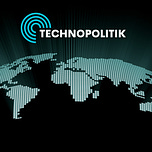

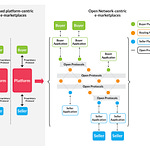
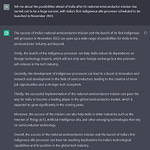
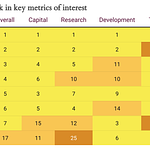
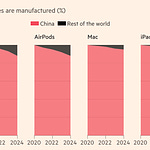
Share this post